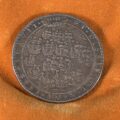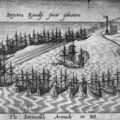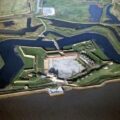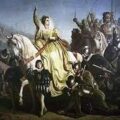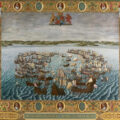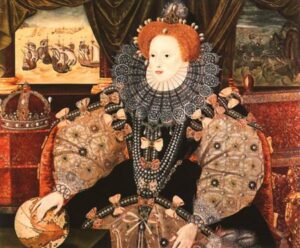
On the 30th July 1588 the wind changed and the remaining ships of the Spanish Armada were forced northwards and scattered. It really did seem that the elements, particularly the wind, were on England’s side! Alison Weir quotes Sir Francis Drake as writing:-
“There was never anything pleased me better than seeing the enemy flying with a southerly wind northward.”
Things got worse for the Spaniards as terrible storms began, causing more damage to the Spanish ships. It is little wonder that the wind that helped the English at the Battle of Gravelines and which scattered the Spanish fleet the following day became known as the “Protestant wind” because people believed that God had sent this wind to protect England from the Catholic Spanish Armada. Later, when it was obvious that the Spanish Armada had been defeated, medals were struck to celebrate and these medals were inscribed with “Flavit Jehovah et Dissipati Sunt“, meaning “Jehovah blew with His wind and they were scattered”. The wind certainly helped the English fleet.
Also on this day, Elizabeth I moved from Richmond Palace to St James’s Palace, which was seen as more secure. Lord Hunsdon (Henry Carey), Elizabeth’s cousin, was in charge of the Queen’s safety and the Queen was surrounded by a guard of 200 men. They were not taking any chances with their Queen’s life.
